Related Research Articles
In the broader context of racism in the United States, mass racial violence in the United States consists of ethnic conflicts and race riots, along with such events as:

Josephine County is one of the 36 counties in the U.S. state of Oregon. As of the 2020 census, the population was 88,090. The county seat is Grants Pass. The county is named after Virginia Josephine Rollins (1834–1912), a settler who was the first white woman to live in the county's boundaries. Josephine County comprises the Grants Pass, OR Metropolitan Statistical Area, which is included in the Medford-Grants Pass, OR Combined Statistical Area.

Jackson County is one of the 36 counties in the U.S. state of Oregon. As of the 2020 census, the population was 223,259. The county seat is Medford. The county is named for Andrew Jackson, the seventh president of the United States. Jackson County comprises the Medford, OR Metropolitan Statistical Area. There are 11 incorporated cities and 34 unincorporated communities in Jackson County; the largest is Medford, which has been the county seat since 1927.

Johnston City is a city in Williamson County, Illinois, United States. The population was 3,348 at the 2020 census. This was a center of coal mining in the early 20th century, having a peak of population in the 1920s. The mining jobs attracted many immigrants from Europe.

Jacksonville is a city in Jackson County, Oregon, United States, approximately 5 miles (8 km) west of Medford. It was named for Jackson Creek, which flows through the community and was the site of one of the first placer gold claims in the area. It includes Jacksonville Historic District, which was designated a U.S. National Historic Landmark in 1966. As of the 2010 census, the city population was 2,785, up from 2,235 at the 2000 census.

Medford is a city in and the county seat of Jackson County, Oregon, in the United States. As of the 2020 United States Census on April 1, 2020, the city had a total population of 85,824, making it the eighth-most populous city in Oregon, and a metropolitan area population of 223,259, making the Medford MSA the fourth largest metro area in Oregon. The city was named in 1883 by David Loring, civil engineer and right-of-way agent for the Oregon and California Railroad, after Medford, Massachusetts, which was near Loring's hometown of Concord, Massachusetts. Medford is near the middle fork of Bear Creek.

The Rogue River in southwestern Oregon in the United States flows about 215 miles (346 km) in a generally westward direction from the Cascade Range to the Pacific Ocean. Known for its salmon runs, whitewater rafting, and rugged scenery, it was one of the original eight rivers named in the Wild and Scenic Rivers Act of 1968. Beginning near Crater Lake, which occupies the caldera left by the explosive volcanic eruption and collapse of Mount Mazama, the river flows through the geologically young High Cascades and the older Western Cascades, another volcanic province. Further west, the river passes through multiple exotic terranes of the more ancient Klamath Mountains. In the Kalmiopsis Wilderness section of the Rogue basin are some of the world's best examples of rocks that form the Earth's mantle. Near the mouth of the river, the only dinosaur fragments ever discovered in Oregon were found in the Otter Point Formation, along the coast of Curry County.
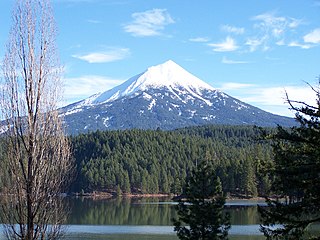
Mount McLoughlin is a dormant steep-sided stratovolcano, or composite volcano, in the Cascade Range of southern Oregon and within the United States Sky Lakes Wilderness. It is one of the volcanic peaks in the Cascade Volcanic Arc, within the High Cascades sector. A prominent landmark for the Rogue River Valley, the mountain is north of Mount Shasta, and south-southwest of Crater Lake. It was named around 1838 after John McLoughlin, a Chief Factor for the Hudson's Bay Company. Mount McLouglin's prominence has made it a landmark to Native American populations for thousands of years.

The Siskiyou Mountains are a coastal subrange of the Klamath Mountains, and located in northwestern California and southwestern Oregon in the United States. They extend in an arc for approximately 100 miles (160 km) from east of Crescent City, California, northeast along the north side of the Klamath River into Josephine and Jackson counties in Oregon. The mountain range forms a barrier between the watersheds of the Klamath River to the south and the Rogue River to the north. Accordingly, much of the range is within the Rogue River – Siskiyou and Klamath national forests, and the Pacific Crest Trail follows a portion of the crest of the Siskiyous.

Lynching was the widespread occurrence of extrajudicial killings which began in the United States' pre–Civil War South in the 1830s, slowed during the civil rights movement in the 1950s and 1960s, and continued until 1981. Although the victims of lynchings were members of various ethnicities, after roughly 4 million enslaved African Americans were emancipated, they became the primary targets of white Southerners. Lynchings in the U.S. reached their height from the 1890s to the 1920s, and they primarily victimized ethnic minorities. Most of the lynchings occurred in the American South, as the majority of African Americans lived there, but racially motivated lynchings also occurred in the Midwest and border states. In 1891, the largest single mass lynching (11) in American history was perpetrated in New Orleans against Italian immigrants.

James Ford, born James N. Ford, also known as James N. Ford Sr., the "N" possibly for Neal, was an American civic leader and business owner in western Kentucky and southern Illinois, from the late 1790s to mid-1830s. Despite his clean public image as a "Pillar of the Community", Ford was secretly a river pirate and the leader of a gang that was later known as the "Ford's Ferry Gang". His men were the river equivalent of highway robbers. They hijacked flatboats and Ford's "own river ferry" for tradable goods from local farms that were coming down the Ohio River.
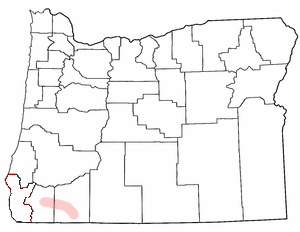
The Rogue River Wars were an armed conflict in 1855–1856 between the U.S. Army, local militias and volunteers, and the Native American tribes commonly grouped under the designation of Rogue River Indians, in the Rogue River Valley area of what today is southern Oregon. The conflict designation usually includes only the hostilities that took place during 1855–1856, but there had been numerous previous skirmishes, as early as the 1830s, between European American settlers and the Native Americans, over territory and resources.

The Banditti of the Prairie, also known as The Banditti, Prairie Pirates, Prairie Bandits, and Pirates of the Prairie, in the U.S. states of Illinois, Indiana, and Ohio and the Territory of Iowa, were a group of loose-knit outlaw gangs, during the early to mid-19th century. Though bands of roving criminals were common in many parts of Illinois, the counties of Lee, DeKalb, Ogle, and Winnebago were especially plagued by them. The new crime wave in the region of the frontier Midwest may have occurred following the crackdown on Southern outlaws by the rising vigilante-regulator movement and the breakup of the criminal syndicate of John A. Murrell and his gang, the "Mystic Clan", in the Southern United States. In 1841, the escalating pattern of house burglary, horse and cattle theft, stagecoach and highway robbery, counterfeiting and murder associated with the Banditti had come to a head in Ogle County. As the crimes continued, local citizens formed bands of vigilantes known as Regulators. A clash between the Banditti and the Regulators in Ogle County near Oregon, Illinois resulted in the outlaws' demise and decreased Banditti activity and violent crime within the county.

Canyon Passage is a 1946 American Western film directed by Jacques Tourneur (1904-1977), and set in the American frontier era of the old Oregon Territory in the mid-1850s. It stars Dana Andrews (1909-1992), Susan Hayward (1917-1975), and Brian Donlevy (1901-1972). Featuring love triangles and an Indian natives uprising, the film was adapted from the 1945 novelette in the Saturday Evening Post magazine of Canyon Passage by Ernest Haycox (1899-1950), Hoagy Carmichael (1899-1951), (music) and Jack Brooks (lyrics) were nominated for Academy Award for Best Original Song ("Oscar") for the popular tune of "Ole Buttermilk Sky" sung by country-western music singer Carmichael of the late 1940s and 1950s.
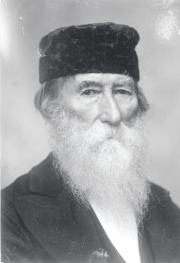
Peter Britt was a Swiss portrait painter and American pioneer photographer, meteorologist, accomplished horticulturist, an early settler and developer in the Rogue Valley of the Oregon Territory. Britt is considered as one of the Pacific Northwest's most celebrated photographers, as well as the "father of the grape industry" in Southern Oregon. His photos of Crater Lake were instrumental in creation of the Crater Lake National Park in 1902.
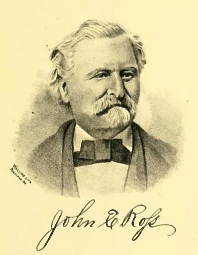
John England Ross was an American politician born in Madison County, Ohio. He led volunteer forces from Oregon in the Cayuse War and the Modoc War, prospected for gold in the California Gold Rush, and represented Jackson County, Oregon in the Oregon Territorial Legislature and Oregon State Senate.
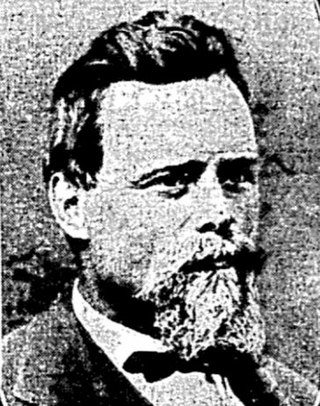
Cyrus Y. Jacobs was a grain mill owner, distiller, and merchant in Boise, Idaho. He served as mayor of Boise City 1879–1880.
The Danville race riot occurred on July 25, 1903, in Danville, Illinois, when a mob sought to lynch a Black man who had been arrested. On their way to county jail, an altercation occurred that led to the death of a rioter and the subsequent lynching of another Black man. At least two other Black residents were also assaulted. The rioters failed to overcome the police stationed at the jail, and the Illinois National Guard restored order the next day.

Will Jones was an African-American man who was lynched in Ellaville, Schley County, Georgia by a white mob on February 13, 1922. According to the United States Senate Committee on the Judiciary it was the 13th of 61 lynchings during 1922 in the United States.
References
- ↑ ( The Oregon Statesman 1852 , p. 2): "He was twenty-one years of age."
- ↑ ( Plymale 1903 , p. 15): "this was the first execution in Southern Oregon"
- ↑ ( Plymale 1903 , p. 15): "there were no legally authorized courts"
- ↑ ( Plymale 1903 , p. 15): "a man who was called Brown by his comrades, but whose right name was Jackson Maynard"
- ↑ ( The Oregon Statesman 1852 , p. 2): "Robert Maynard, who went by the name of Brown"
- 1 2 "XLIII — Jacksonville". History of Southern Oregon. A. G. Walling. 1884. p. 360. LCCN a14001444 . Retrieved 26 February 2024.
Potts was shot dead, without provocation, by a gambler named Brown
- 1 2 3 4 "Lynching on Rogue River". The Daily Alta California . No. 166, Vol III. San Francisco: E. Gilbert & Co. 15 June 1852. Retrieved 26 February 2024.
Brown, of Illinois, who killed John D. Platt [...] has been hung [...] trial at the hands of a committee appointed by the miners
- 1 2 David Newsom (9 August 1852). "From Oregon". Sangamo Journal / Illinois State Journal. Illinois Digital Newspaper Collections. p. 2. Retrieved 26 February 2024.
a gambler shot a man [...] and at the expiration of a week the man pulled hemp!
- ↑ ( Plymale 1903 , p. 15): "Jackson Maynard, a gambler"
- ↑ Sacramento Daily Union 1852, p. 37: "John Brown, of Illinois"
- ↑ ( Reinhart 1962 , p. 2): "John Brown from Pike County, Illinois"
- ↑ ( Plymale 1903 , p. 15): "the mines on Rich Gulch within the limits of Jacksonville were discovered [...] late in the fall of 1851."
- ↑ ( The Oregon Statesman 1852 , p. 2): "Jacksonville, a small mining village on Rogue River"
- 1 2 3 "Oregon". Illinois Daily Journal. No. 360, Vol IV. S. & A. Francis. 31 July 1852. p. 2. OCLC 8821623.
Robt. S. Maynard, from Illinois, shot a man by the name of J. C. Platt, at Jacksonville, because he had been insulted by him [...] executed in three days after
- ↑ ( Plymale 1903 , p. 15): "killed Samuel Potts"
- ↑ ( The Oregon Statesman 1852 , p. 2): "Brown said he was insulted, and that he would shoot Platt. He borrowed a revolver"
- ↑ ( Sacramento Daily Union 1852 , p. 2): "Upon being called a liar he shot his antagonist"
- ↑ ( Plymale 1903 , p. 15): "Potts made no attempt to assault Maynard"
- ↑ ( The Oregon Statesman 1852 , p. 2): "He said [...] buried in that grave (pointing to a grave nearby, which had been dug), and that the traveler would point to it and say there lies a man who would not be insulted"
- ↑ ( Plymale 1903 , p. 15): "at this time there were no county organizations, no courts"
- ↑ "The Territory of Oregon". The Ovid Bee. No. 24, Vol 15. Ovid, New York: David Fairchild and Son. 22 September 1852. p. 1. LCCN sn83031494. OCLC 9887516 . Retrieved 26 February 2024.
May 29 [...] This may be called "mob law," but it is a government that seems to be necessary in these new settlements, where courts are not organized [...] A white man was [..] hung, for the diabolical murder of a white man
- ↑ ( History of Southern Oregon 1884 , p. 360): "there was a law higher, stronger, more effective than written codes--the stern necessity of mutual protection--and a strong element had the courage and will to enforce it. Justice was administered by the people's court"
- ↑ ( Reinhart 1962 , pp. 37–39): "Brown was called of that class, then very obnoxious to the miners, who had lost money with them, and were mad at them for beating them out of their money [...] The miners were for lynching Brown right off [...] A guard of fifty men (Vigilantes)"
- ↑ ( Plymale 1903 , p. 15): "they had a wholesome dread of the swift and unerring justice of the miners"